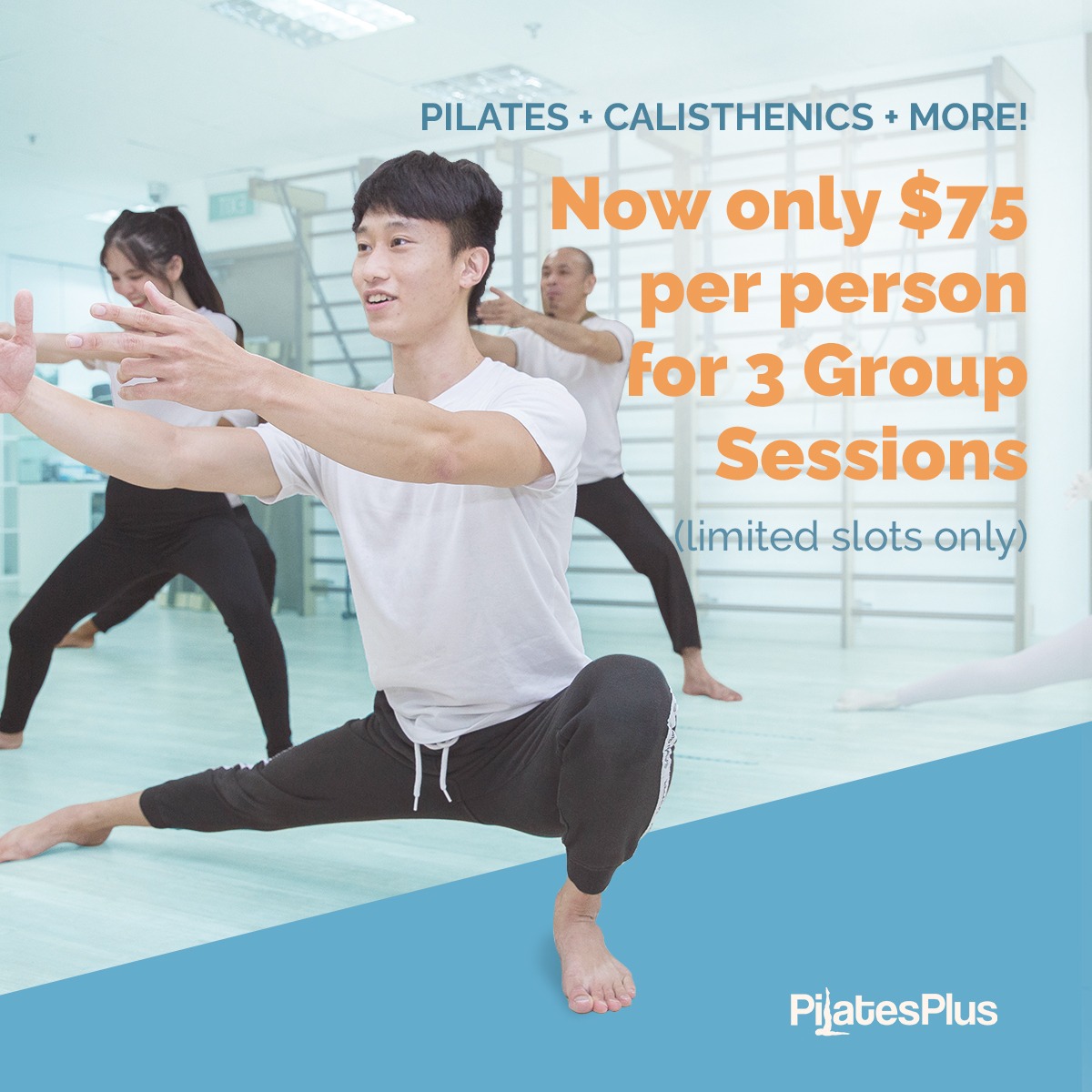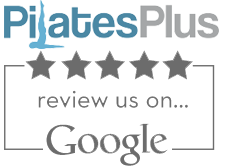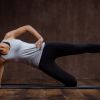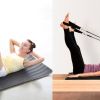How Do You Breathe in Pilates: Why is it Important!

One of the things that stand out the very first time I visited a Pilates studio was the sound of the breathing technique. I was attending a Ron Fletcher workshop at that time in the early 2000s, and that is when I got introduced to Pilates breathing. The detailed manner of doing Pilates exercises is already challenging enough and adding the breathing technique can be confusing, but at the same time refreshing in a way, especially if you are new to the method.
You breathe in Pilates by inhaling through your nose and exhaling through your mouth while bracing your abdominal muscles the whole time. Your ribs will expand to the sides and front on the inhalation, and the ribs will close down and in on the exhalation. Your abdominal muscles will be braced the whole time.
Breathing is the first principle Joseph Pilates introduce when he started teaching his work. It makes sense as it is the foundation of every movement when you are practicing Pilates. Let us look further into the breathing technique so you can incorporate it better into your practice.

1. Inhale through your nose
According to this article from Cleveland Clinic, three important things will happen when you inhale through your nose. Temperature control, filtering, and humidifying.
As the air goes through our nose, either it is too hot or too cold, our nasal passage will adjust the air temperature that goes in to match our body’s temperature.
The hair-like structure inside our nasal cavity will filter small particles from the air that we breathe in, unlike when breathing in through the mouth, which will send unfiltered air to the lungs.
The air inside our nasal cavity is very humid, which will humidify the air that comes in through our nose. This humidification will help in extracting oxygen when the air goes to our lungs.
It is important that when you are breathing in a Pilates movement, that you have to inhale deeper than you normally would so you will be able to condition your breathing at the same time; this will serve as the timing for your movement.
2. Brace your abdominal muscles
One of the main cues that you can hear in a Pilates class is lengthening your spine or posture. This will be achieved by thinking that you’re wearing a tight corset the whole time.
This practice will help you to control the natural corset muscle of your body which is called the Transversus abdominis muscle which is shape like a big belt that is around your waistline.
Not only will you look slimmer without losing any weight, but you will also feel a lot taller with your posture at the end of the class.

3. Expand your ribs to the side
If you are concentrating well on keeping your abdominal muscles braced the whole time, there is nowhere for the air to go after the inhalation except to expand the ribs outside.
There are two breathing mechanisms that will happen here:
- The bucket handle mechanism is the expansion of your ribs to the side as the air goes in as you inhale.
- The pump handle mechanism is the upward and forward movement of your chest bone as you inhale.
Both of these mechanisms will release the muscles between your ribs, which most likely is tight, knowing that our lifestyle revolves mainly around sitting down facing the computer or holding our mobile phone. And if you don’t really exercise heavy enough where you end up running out of breath, your ribs and the muscles in between them (intercostal muscles) will never get the experience of being stretch fully as you’re breathing.
4. Exhale through your mouth
Exhaling through the mouth may not be the natural breathing pattern in general but when doing Pilates exercises, the air coming out through the mouth will have quite a few benefits.
- Unlike exhaling through your nose, you can control the airflow when you exhale through the mouth.
- Pursed-lip breathing where you keep your lips tight as if you’re making a hissing sound as you breathe out will allow you to exhale longer.
- The ability to control the length of your exhalation will allow you to time your movement well.
- Controlling your exhalation with pursed-lip breathing will also force the abdominal muscles to contract further in squeezing all the air out, further strengthening them.
- Prolonging the exhale will also increase your carbon dioxide tolerance, resulting in your being more relaxed in general.
5. Your ribs go in and down
As you exhale, you want to make sure you exhale all the air out. This will help you cleanse your system and contract the abdominal and intercostal muscles.
Two other variations of Pilates breathing
In addition to the standard Pilates breathing technique, we teach in our Pilates studio two more variations that you can work on to add more challenge to your practice.
- One lung breathing
This is technically expanding one side of your ribs by contracting the other sides slightly. This breathing technique requires you to focus more and it will really help you understand your body’s capacity to breathe in different ways.
An easy way to practice this is by pressing one hand to the same side of your ribs (right hand on right ribs), the try to push your hands with your ribs on the inhalation phase of the breathing.
- Percussive breathing
This type of Pilates breathing is loud in nature as it requires you to breathe out stronger in pursed-lip breathing with a percussive timing. For example, you breathe in for two beats in succession and breathe out two beats as well. The number of beats can be increased to as many as ten beats in and ten beats out to challenge your breathing pattern.
Why is Pilates breathing important?
- Paying attention to your breathing will help you concentrate more on your movement. It will serve as your timing once you are more familiar with the exercises. It might be tougher at first, but you will soon get the hang of it, and it will be just automatic.
- The pilates breathing technique will help improve your circulation as you are not just breathing normally but you are trying to go deep in both inhalation and exhalation.
- The timing of your breath will serve as the rhythm of your movement
- It helps you target the core muscles early on in the exercise session.
- As you are working on expanding and contracting your ribs during the breathwork, it will mobilize the rib and thoracic area, which can be generally tight on most people.
- Doing the breathing in the warm-up of your Pilates session will help you observe your posture better. With the bracing of the abdominal muscles, you’ll be able to lengthen your spine, which will help prevent the hunching of your back as you grow older.

How to start practicing Pilates breathing?
Breathing in Pilates is incorporated all throughout the session, whether it is a Pilates mat, Reformer group, or a Private Pilates class.
To get started with your practice, you can work on these six positions to get familiar with the technique.
- Standing
- Sitting position
- All 4s position (On your hands and knees)
- Supine position (Lying on your back)
- Side-lying
- Prone position (Lying facing down)
You need to understand how you are able to apply the breathing technique in different positions, as it will get more complicated as you incorporate the movements in the latter part of the session.








